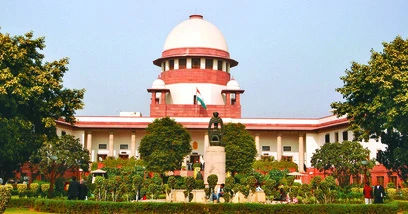Expressing serious concern over the rising pollution in Delhi, the Supreme Court on Monday came down heavily on the Government of National Capital Territory of Delhi (GNCTD) for the delay in implementing anti-pollution measures, saying that the government should not have taken such a big risk.
After the Air Quality Index (AQI) of Delhi reached the “severe plus” category for the first time this season (reaching nearly 500 in some places of Delhi), the Commission for Air Quality Management (CAQM) implemented Stage 4 of the anti-pollution plan, Graded Response Action Plan (GRAP), in the national capital and neighbouring areas.
Under Stage 4 of GRAP, the Delhi government banned the entry of trucks into the city and halted the construction work. Schools have also been shut down.
The Apex Court, while hearing a petition that sought directions to curb air pollution in the national capital and adjoining areas, told the Delhi government not to remove the GRAP IV restrictions without its permission, even if AQI went below 450.
The Bench further asked the government about the steps it had taken so far to curb the rising pollution levels, noting that it would hear the matter at the end of the board.
The data available with the System of Air Quality and Weather Forecasting and Research (SAFAR) revealed that Delhi’s AQI reached 481 on Monday morning. Of the 35 monitoring stations in the national capital, most recorded over 400 AQI, with Dwarka reporting the highest at 499.
On November 14, the petitioners sought an early hearing on the matter, stating that the situation was becoming “serious”. The plea alleged that the Delhi government did not take any concrete measures to curb the pollution levels.


